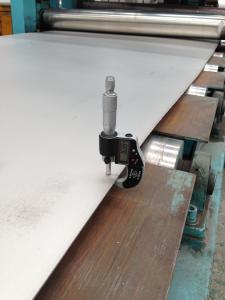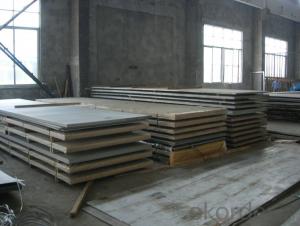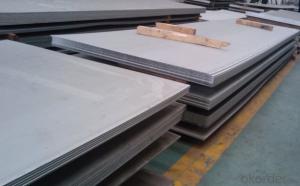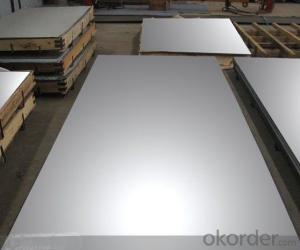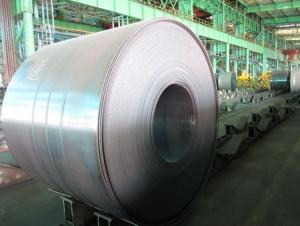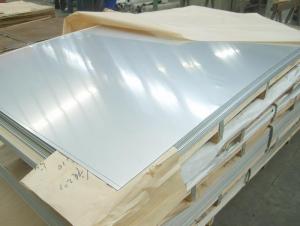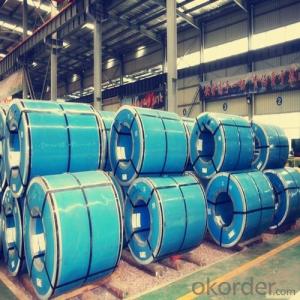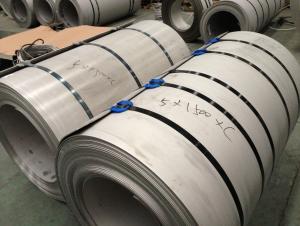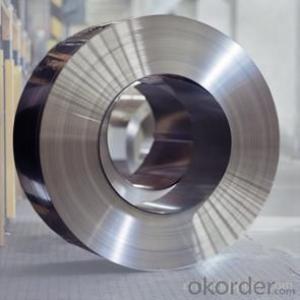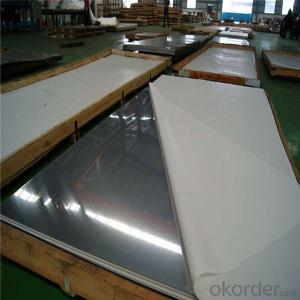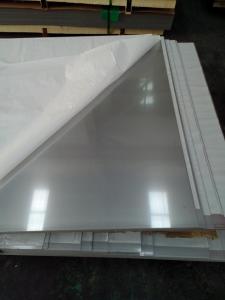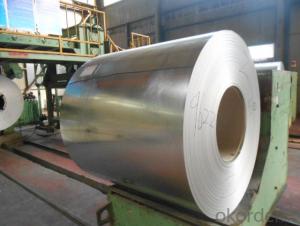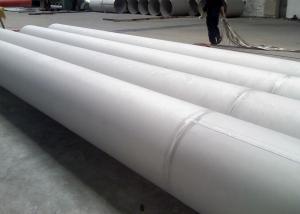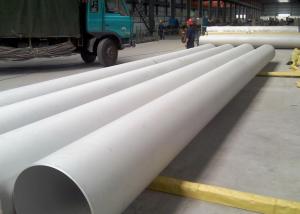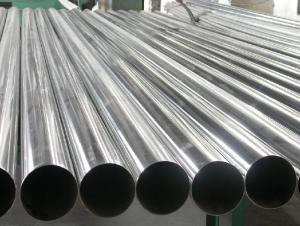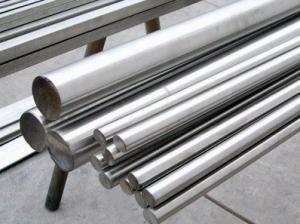Cold Rolled Stainless Steel Plate In Stocks With Price
- Loading Port:
- Shanghai
- Payment Terms:
- TT or LC
- Min Order Qty:
- 4 m.t.
- Supply Capability:
- 4000 m.t./month
OKorder Service Pledge
OKorder Financial Service
You Might Also Like
1.Structure of Product Description
Cold rolled Stainless steel sheet is widely used in the field of construction field and decoration field, etc.the detailed grade are as follows: 201, 202, 301, 304, 316, 410, 420, 430, etc. The surface is including 2B, BA, Mirror Finish, Checkered, etc.
2. Main features of the product
a. Competitive price
b. Frist-Class Service.
c. Shortest service.
3. Image.
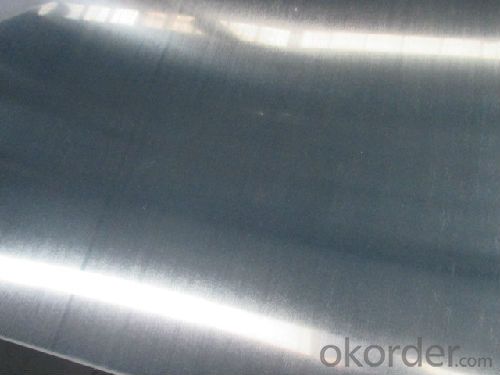
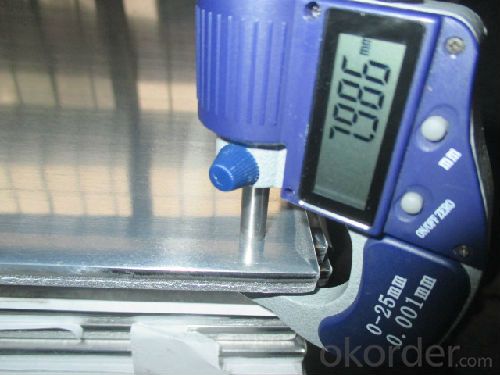
4. Product detailed sizes:
1000mm*2000mm, 1219mm*2438mm,1220mm*2440mm, 1250mm*2500mm,1500mm*3000mm, etc.
5. FAQ:
What is the quality standard?
---Usually our standard is GB3880-2006 or else.
What is the width range?
---It is from 1000mm to 2500mm, etc.
What is the length range?
---It is from 2000mm to 6000mm, etc.
What is the MOQ for your products yet?
---Normally it is around 3 tons/each size.
How many tons did you export in one year?
---Normally it is around 9000 tons totally.
Where is your client from?
---Normally it is from saudi arabia, uae, etc.
---Normally they are stainless steel sheet, stainless steel coil, stainless steel checkered sheet, stainless steel mirror finished sheet, color coated stainless steel sheet, etc.
- Q: Can stainless steel sheets be cold rolled?
- Indeed, it is possible to cold roll stainless steel sheets. The cold rolling process involves passing a stainless steel sheet through a sequence of rollers at ambient temperature, leading to a decrease in thickness and an augmentation in both hardness and strength. By employing this technique, one can create stainless steel sheets with accurate measurements and impeccable surface textures. Cold rolling is widely utilized in the production of stainless steel sheets, catering to diverse sectors including automotive parts, kitchen devices, and architectural constructions.
- Q: 304 why is stainless steel magnetic?
- Some people often think that the inspection of stainless steel with good or bad, using a magnet, magnet does not smoke, no magnetic, genuine; smoke, then there is magnetism, is considered a fake fake. In fact, this is an extremely one-sided and unrealistic method of discrimination.Generally speaking, stainless steel has magnetism and also has no magnetism. The austenite is nonmagnetic or weakly magnetic, such as 201, 202, 304, 316, etc. the martensite or ferrite is magnetic, such as 430, 420, 410, etc..
- Q: What are the benefits of using textured stainless steel sheets in retail displays?
- Using textured stainless steel sheets in retail displays offers several advantages. Firstly, they can give a modern and sleek look to any retail space, attracting customers and setting the store apart from competitors. Secondly, these sheets are highly durable, able to withstand wear and tear and maintain their appearance over time. Additionally, they are easy to clean and maintain, ensuring a high level of hygiene in the store. Moreover, their versatility allows for customization to fit any retail display needs. Lastly, these sheets are environmentally friendly, as stainless steel is recyclable and promotes sustainability. In conclusion, utilizing textured stainless steel sheets in retail displays enhances brand image, creates visually appealing displays, and provides a positive shopping experience for customers.
- Q: How do you install stainless steel sheets?
- In order to install stainless steel sheets, there are a few basic tools you will need and some steps that should be followed: 1. Begin by measuring and preparing the area where you intend to install the stainless steel sheets. Ensure that the surface is clean, dry, and free from any dust or debris. If necessary, smooth out any rough spots or imperfections on the surface by sanding them down. 2. Cut the sheets to the desired size and shape using a metal cutting tool such as a circular saw or a jigsaw with a metal cutting blade. For your safety, remember to wear protective goggles and gloves while cutting. 3. Apply a high-strength construction adhesive to the backside of the stainless steel sheet. Ensure that the adhesive is applied evenly, without leaving any gaps or air pockets. To achieve better coverage, you may use a notched trowel to spread the adhesive. 4. Carefully position the stainless steel sheet onto the prepared surface, making sure it is properly aligned. Apply gentle and consistent pressure to ensure that the sheet adheres to the surface. A roller or clean cloth can be used to firmly press the sheet onto the surface. 5. If necessary, use stainless steel screws to further secure the sheet. Place the screws evenly along the edges and corners, ensuring proper spacing. Be cautious not to overtighten the screws in order to avoid damaging the sheet. 6. Trim any excess stainless steel sheet that hangs over the edges to achieve the desired size. Use a metal cutting tool for this task. Once trimmed, smooth out any rough edges with a file or sandpaper. To give the sheet a polished finish and remove any smudges or fingerprints, a stainless steel cleaner can be used. Always make sure to follow the manufacturer's instructions for the specific stainless steel sheets you are using, as installation methods may slightly vary. If you are unsure or uncomfortable with the installation process, it is recommended to seek professional assistance.
- Q: What is the formability of stainless steel sheets?
- The formability of stainless steel sheets is generally good, as they can be easily shaped, bent, and formed into various complex shapes without cracking or breaking.
- Q: How do you remove heat discoloration from stainless steel sheets?
- To effectively remove heat discoloration from stainless steel sheets, various techniques can be employed. One effective approach involves utilizing a specialized stainless steel cleaner or polish specifically formulated for eliminating heat discoloration. These products often contain gentle abrasives that aid in removing the discolored layer. Adhering to the instructions provided, apply the product to the affected area using a soft cloth or sponge. Employ a gentle circular motion while rubbing, then rinse the surface with water and thoroughly dry it. Another viable option entails creating a paste by combining equal parts baking soda and water. Apply this mixture to the discolored region and gently rub it in using a soft cloth. Rinse thoroughly with water and dry the surface completely. Should the discoloration persist despite previous attempts, employing a stainless steel scratch eraser or fine-grit sandpaper can be considered. It is crucial to exercise caution when using these methods, as they possess the potential to scratch the stainless steel surface. Always conduct a preliminary test in a small, inconspicuous area and proceed with care. It is worth emphasizing that preventing heat discoloration is key to maintaining stainless steel sheets' appearance. Utilizing heat-resistant pads or trivets beneath hot pots and pans can effectively hinder heat transfer to the stainless steel surface. Additionally, avoiding direct contact with high heat sources, such as keeping stainless steel sheets at a safe distance from stovetops or ovens, can significantly minimize the occurrence of discoloration.
- Q: What is the typical thickness range for stainless steel sheets?
- The specific application and requirements determine the typical thickness range of stainless steel sheets. Generally, these sheets are readily available in thicknesses ranging from 0.4mm to 6mm. Thinner sheets, in the range of 0.4mm to 1mm, find common usage for decorative purposes or in applications that demand flexibility. Conversely, thicker sheets are extensively employed in structural or industrial applications that necessitate strength and durability. It is worth mentioning that these thickness ranges are not exhaustive, and customized stainless steel sheets can be fabricated to fulfill project-specific requirements.
- Q: Can stainless steel sheets be used for chemical reactors?
- Indeed, chemical reactors can indeed utilize stainless steel sheets. The utilization of stainless steel in chemical reactors is quite popular due to its remarkable resistance to corrosion. Its ability to resist chemical reactions with various substances is commendable, thus rendering it suitable for handling corrosive chemicals or environments. Moreover, stainless steel sheets are renowned for their durability, exceptional strength, and capacity to endure high temperatures. Hence, they are ideal for deployment in chemical reactors that may operate under extreme conditions. Furthermore, stainless steel is effortlessly maintainable and easy to clean, which is a pivotal factor in ensuring the purity and integrity of the reaction process. In conclusion, stainless steel sheets are widely employed in the construction of chemical reactors and are widely recognized as a trustworthy and efficient choice of material for this purpose.
- Q: Are stainless steel sheets resistant to scratches?
- In general, stainless steel sheets have a resistance to scratches. Their durability and strength make stainless steel highly impervious to scratching or denting. Nevertheless, it's crucial to acknowledge that no material is entirely impervious to scratches, and with regular use, stainless steel may acquire minor scratches over time. Nevertheless, these scratches are generally surface-level and can often be effortlessly eradicated or reduced through proper cleaning and maintenance. Furthermore, the degree of scratch resistance can fluctuate depending on the grade and finish of the stainless steel sheet.
- Q: Are stainless steel sheets resistant to radiation?
- Yes, stainless steel sheets are generally resistant to radiation. Stainless steel is known for its high resistance to corrosion and oxidation, and it has been used in various industries where radiation exposure is a concern, such as nuclear power plants, medical facilities, and laboratories. Stainless steel's resistance to radiation is due to its composition, which includes chromium, nickel, and other alloying elements that form a protective oxide layer on the surface, preventing radiation from penetrating the material. However, it is important to note that the level of radiation resistance may vary depending on the specific grade and thickness of the stainless steel sheet. Therefore, it is advisable to consult with experts or refer to specific technical specifications when considering the use of stainless steel sheets in radiation-prone environments.
Send your message to us
Cold Rolled Stainless Steel Plate In Stocks With Price
- Loading Port:
- Shanghai
- Payment Terms:
- TT or LC
- Min Order Qty:
- 4 m.t.
- Supply Capability:
- 4000 m.t./month
OKorder Service Pledge
OKorder Financial Service
Similar products
Hot products
Hot Searches
Related keywords
